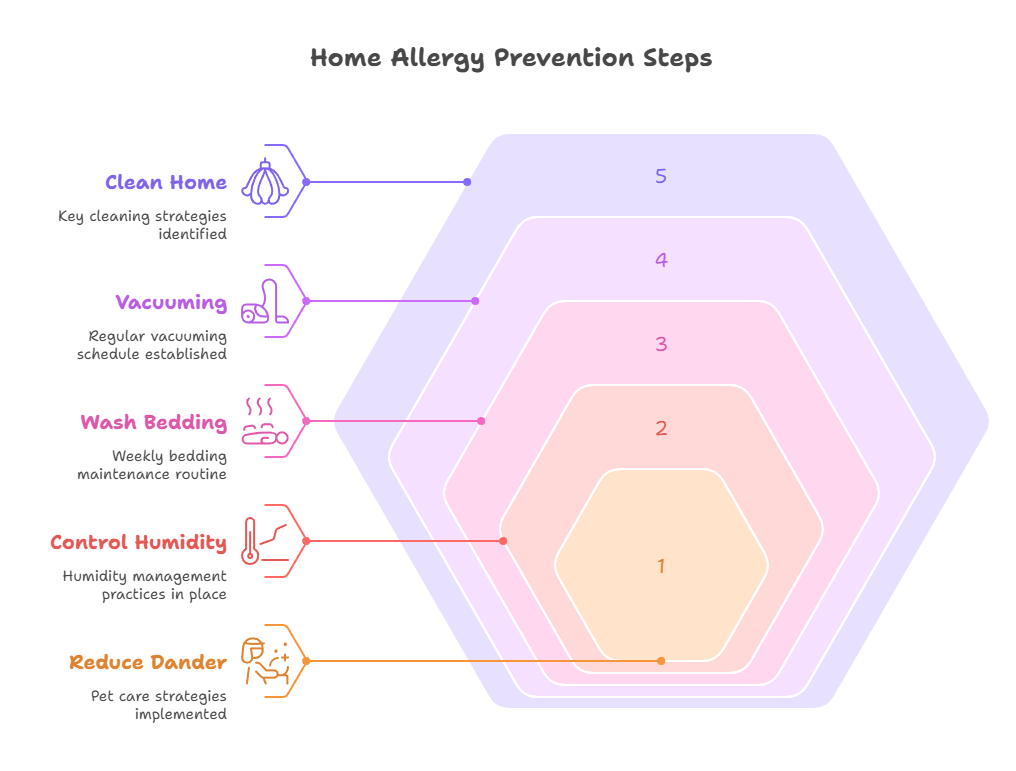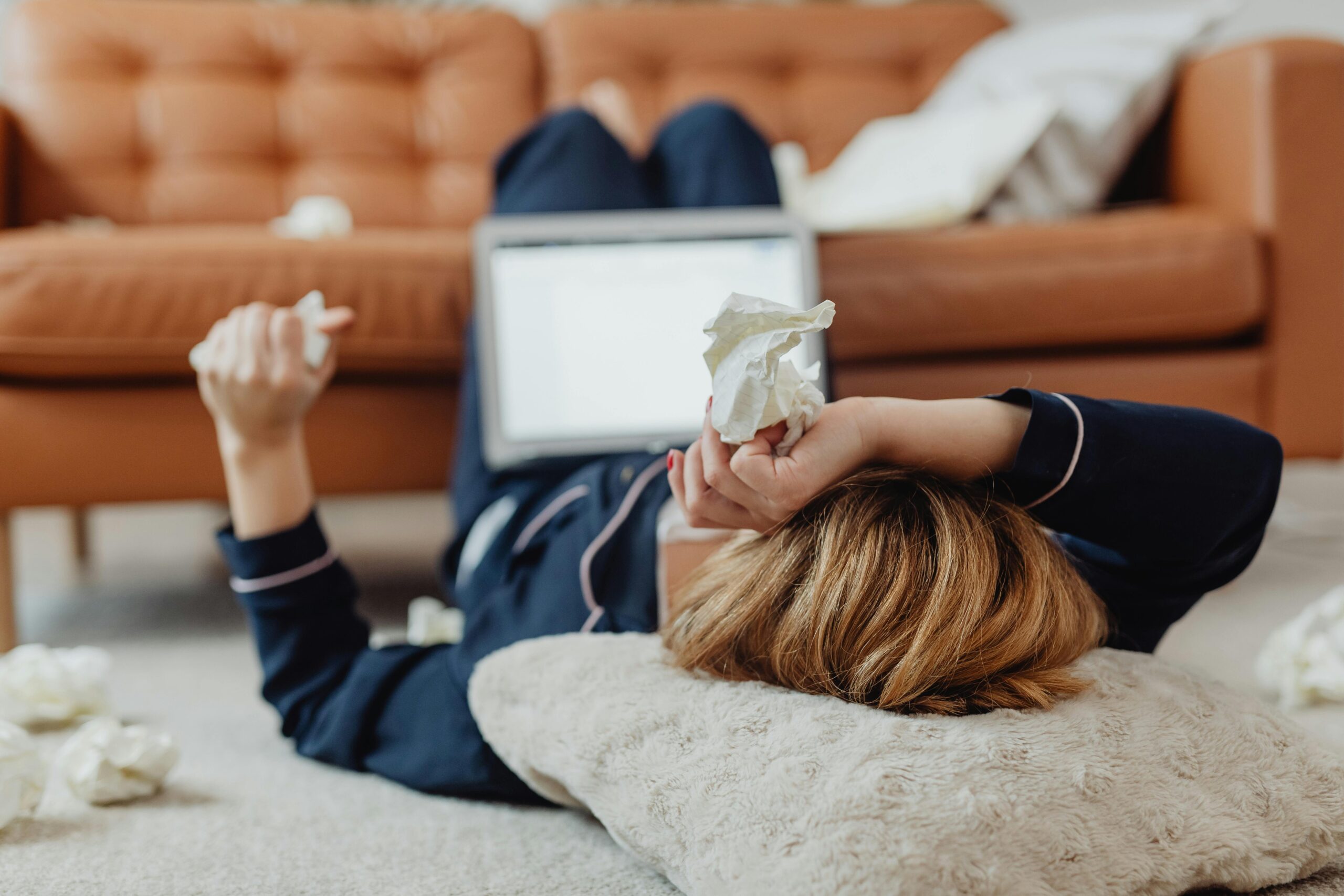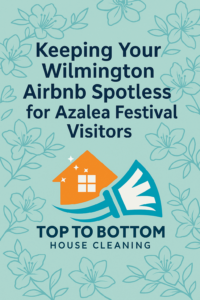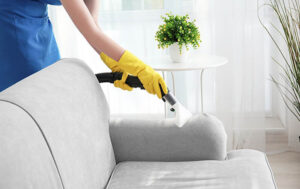Allergy season can make your home feel like a battleground. If you’re constantly sneezing, dealing with itchy eyes, or waking up congested, the culprit is likely allergens like pollen, dust mites, pet dander, and mold spores lurking in your home. These microscopic invaders cling to surfaces, float in the air, and settle into fabrics, making it tough to breathe easy.
The good news? A solid cleaning routine can make all the difference. By tackling allergens at the source and using smart cleaning techniques, you can dramatically reduce indoor allergens and create a fresher, healthier living space. Let’s break it down.
Establish an Effective Cleaning Strategy
The way you clean matters just as much as how often you do it. If you’re not careful, you could actually spread allergens around instead of getting rid of them. Here’s how to clean smarter.
Clean from High to Low
Dust and allergens don’t stay put—they settle downward. If you start cleaning at eye level, you’ll just knock dust onto surfaces you’ve already cleaned. Instead:
- Start with ceiling fans, light fixtures, and window frames. These spots collect a surprising amount of dust and pollen.
- Use a microfiber cloth dampened with water to trap dust instead of just pushing it around.
- Wipe down shelves, countertops, and furniture next. Finish with the floors.
This method keeps dust from resettling where you just cleaned. If you want to go deeper into hidden germ hotspots, check out these surprising germiest places in your home.
Use a HEPA Vacuum
Not all vacuums are created equal. If you’re using a standard vacuum, you might just be blowing allergens back into the air. A HEPA (High-Efficiency Particulate Air) filter vacuum is a game changer because it traps 99.97% of allergens, including:
✔️ Pollen that sneaks in from outside
✔️ Dust mites hiding in carpets and upholstery
✔️ Pet dander that clings to fabric surfaces
How often should you vacuum?
- At least twice a week for carpets, rugs, and upholstered furniture.
- More often if you have pets or live in a high-pollen area.
For deep cleaning that tackles stubborn dirt and allergens, check out this guide on deep house cleaning.
Damp Dusting Instead of Dry Dusting
Dry dusting seems harmless, but it actually kicks allergens back into the air—not exactly what you want during allergy season. Instead:
- Use a damp microfiber cloth to wipe surfaces. It grabs dust instead of spreading it.
- Don’t forget baseboards, blinds, and vents—these collect dust quickly.
- Skip feather dusters—they just scatter allergens around.
If you’re looking for allergy-friendly cleaning products, this list of the best cleaning products for allergy sufferers can help.
Keep Bedding & Fabrics Allergen-Free
Your bed is one of the worst places for allergens to build up. Dust mites, pet dander, and pollen get trapped in your sheets, blankets, and pillows—so if you’re waking up congested, your bedding might be the issue. Here’s how to keep it clean.
Wash Bedding Regularly
- Wash your sheets, pillowcases, and blankets weekly in hot water (130°F or higher) to kill dust mites.
- If you have allergies, it’s worth investing in hypoallergenic pillow and mattress covers to block dust mites from settling in.
- Don’t forget your curtains and throw blankets—they collect allergens too.
If you need a full deep cleaning checklist, check out this breakdown of deep house cleaning details.
Control Humidity Levels
High humidity = more dust mites and mold. Keeping moisture in check can make a big difference in allergy control.
- Keep indoor humidity between 40-50%. Anything higher creates a breeding ground for allergens.
- Use a dehumidifier or air conditioning to help regulate moisture levels.
- Ventilate properly—especially in areas like bathrooms and kitchens where moisture builds up.
Struggling with musty smells or mold? Learn how duct cleaning can improve air quality.
Optimize Indoor Air Quality
You can’t see most allergens, but they’re floating in the air, making it harder to breathe indoors. Here’s how to improve your air quality and keep allergens out.
Use Unscented, Allergy-Friendly Cleaning Products
Many cleaning products contain strong fragrances and chemicals that trigger allergy symptoms. A good rule of thumb: if it smells strong, it’s probably irritating your sinuses.
- Swap scented cleaners for fragrance-free options.
- Use natural alternatives like vinegar and baking soda for surfaces.
- Avoid aerosol sprays—they leave irritants lingering in the air.
Need some allergy-safe product recommendations? This guide on the best cleaning products for allergy sufferers is a great resource.
Use an Air Purifier with a HEPA Filter
Even with regular cleaning, some allergens stay airborne. That’s where an air purifier comes in handy.
- Look for a HEPA filter model—it removes 99.97% of airborne allergens, including pollen, pet dander, and mold spores.
- Place air purifiers in high-traffic areas, like bedrooms and living rooms, for the best results.
Want to make your home feel fresher overall? Check out how a clean house can improve mental health.
Proper Ventilation Techniques
Fresh air is great—but only when pollen counts are low. If you throw open your windows during peak allergy season, you might be making things worse.
- Check the pollen forecast before opening windows.
- Use exhaust fans in the kitchen and bathroom to reduce moisture and prevent mold growth.
- Change HVAC filters regularly to keep allergens from circulating through your vents.
If you’re looking for more ways to keep your home clean and efficient, take a look at how to speed up house cleaning.
Managing Pet Allergens
We love our pets, but their fur and dander? Not so much—especially during allergy season. Pet dander is one of the most stubborn allergens, and if you’re not careful, it can settle into carpets, upholstery, and even your air vents. Here’s how to keep it under control.
Groom Pets Regularly
- Bathe and brush pets outdoors to prevent loose fur and dander from spreading inside.
- Wipe their paws and fur with a damp cloth after they’ve been outside to keep pollen from being tracked in.
- Keep pets off furniture and out of bedrooms—especially if you have severe allergies. Your bedroom should be an allergen-free zone.
If your home still feels dusty despite regular grooming, you might need a deep cleaning session—check out this detailed guide on deep house cleaning to get started.
Maintain a Consistent Cleaning Schedule
Consistency is everything. Cleaning once in a while won’t cut it when it comes to allergens—they build up fast. The trick? Stick to a cleaning routine that tackles high-traffic areas daily and goes deeper once a week.
Daily & Weekly Cleaning Routines
Daily Tasks:
✔ Wipe down high-touch surfaces—doorknobs, light switches, and countertops collect dust and dander.
✔ Vacuum high-traffic areas with a HEPA vacuum to keep allergens from settling.
✔ Ventilate rooms when pollen counts are low to refresh indoor air.
Weekly Tasks:
✔ Deep clean carpets and rugs—they trap allergens fast.
✔ Wash bedding in hot water to kill dust mites and remove pet dander.
✔ Mop floors and disinfect surfaces to keep dust and pollen under control.
Need a system to clean efficiently without wasting time? Check out this guide on cleaning your house quickly and effectively.
5 Steps to Keep Your Home Allergy-Free
This provides a simple, visually digestible breakdown of the key strategies for maintaining an allergen-free home. Here’s how you can structure it:
🛑 Step 1: Clean from Top to Bottom
- Start with ceiling fans, light fixtures, and shelves so dust doesn’t resettle.
- Use a damp microfiber cloth instead of dry dusting.
🌀 Step 2: Vacuum with a HEPA Filter
- Twice a week for carpets, rugs, and upholstery.
- HEPA vacuums trap allergens like pollen, pet dander, and dust mites.
🛏 Step 3: Wash Bedding in Hot Water (130°F+)
- Weekly washes kill dust mites.
- Use hypoallergenic mattress and pillow covers for extra protection.
💨 Step 4: Control Humidity & Air Quality
- Keep humidity between 40-50% to prevent mold and dust mites.
- Use a HEPA air purifier and change HVAC filters regularly.
🐾 Step 5: Reduce Pet Dander
- Brush and bathe pets outdoors to minimize indoor allergens.
- Keep pets off beds and upholstered furniture to limit dander buildup.

Conclusion
Keeping your home allergy-proof isn’t about one-time deep cleans—it’s about building a cleaning routine that works year-round. The key takeaways:
- Dust from top to bottom so allergens don’t resettle on clean surfaces.
- Use HEPA filters in vacuums and air purifiers to capture airborne irritants.
- Stick to fragrance-free, allergy-friendly cleaning products for a healthier home.
- Wash bedding weekly in hot water to eliminate dust mites.
- Keep pets groomed and off furniture to reduce pet dander exposure.
With consistent cleaning habits and the right tools, you can breathe easier and keep your home feeling fresh—even in the worst allergy season. Looking for more ways to simplify your cleaning routine? Check out our latest blog posts for expert tips! 🚀
FAQ: Keeping Your Home Clean During Allergy Season
1. How often should I clean my house to reduce allergens?
For best results, vacuum carpets and rugs at least twice a week with a HEPA vacuum. Wipe down surfaces daily with a damp microfiber cloth to prevent dust from circulating. Wash bedding weekly in hot water (130°F or higher) to eliminate dust mites.
2. What’s the best way to improve indoor air quality during allergy season?
Use a HEPA-filtered air purifier in high-traffic areas, change HVAC filters regularly, and keep indoor humidity levels between 40-50% to prevent mold and dust mites from thriving. If you’re dealing with musty air, you might want to look into duct cleaning.
3. Can pets make allergies worse, and how do I reduce their impact?
Yes, pet dander is a major allergen. Brush and bathe pets outdoors regularly, keep them off furniture, and use an air purifier to help trap airborne allergens. If allergies persist, consider designating pet-free zones in your home, especially in bedrooms.
4. What are the best allergy-friendly cleaning products?
Fragrance-free and natural options like vinegar, baking soda, and mild detergent are great choices. Harsh chemicals and scented cleaners can trigger allergies, so it’s best to stick with allergy-friendly cleaning products.
5. How can I speed up my cleaning routine without missing key allergy hotspots?
Focus on high-touch and high-traffic areas first. A structured routine—like daily dusting, weekly deep cleaning, and maintaining air quality—keeps allergens in check. If you need a streamlined approach, check out this guide on cleaning your house quickly and effectively.







